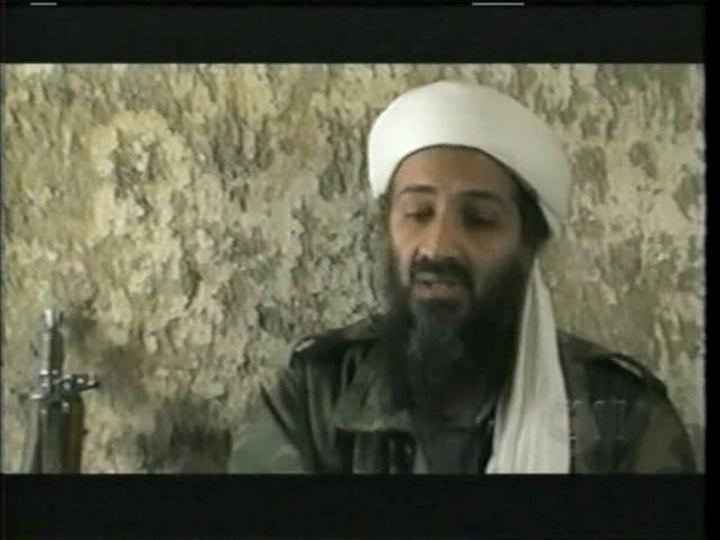
While the administration and the media have focused much of the public's attention on the intelligence gold mine recovered by Navy SEALs during the Osama bin Laden operation, it is important to remember a less dramatic, but important angle that both the government and the press can look into: the financial lifeline that allowed the Al Qaeda leader and his family to build and live in that compound for years.
Al Qaeda has demonstrated it has the knowledge and savvy to use the financial and banking system to achieve its ends. The 9/11 plot, which investigators believe cost the organization between $400,000-500,000 to carry out, was financed almost entirely by Al Qaeda using a combination of cash couriers, conventional wire transfers and banking methods in the United States and overseas. Reforms implemented in the aftermath of 9/11 have made it more difficult to use a financial or banking institution to launder or transfer funds for nefarious purposes. By focusing on the compound, investigators may be able to collect more information about Al Qaeda, which could potentially be just as promising as any of the data from the raid.
Anyone who has ever bought a property or built a home knows that the entire process is inherently a team sport, requiring the participation of multiple individuals to see it through to the end. Simply put, Osama bin Laden couldn't have bought the land, filed the paperwork, hired people to design and build the compound, overseen the construction, set up heating, water and electricity, and pay for bills, taxes and living expenses by himself. At every step of the way, he needed intermediaries to do it on his behalf and pay for the goods received or services rendered. Separating the individual components necessary to build that compound and make it function may uncover possible Al Qaeda operatives, calculate the costs, and possibly get a sense of the organization's financial state at the time the compound was being built and while bin Laden was living there.
According to property records obtained by the Associated Press, a man named Mohammed Arshad bought adjoining plots of land in 2004-2005 to build the compound for $48,000. Two of the plots were purchased using an unidentified middleman who may have passed them on to Arshad -- one of several possible aliases he used -- who may have been bin Laden's courier that inadvertently tipped off U.S. intelligence officials to the location and existence of the compound.
The courier and his brother who lived in the compound are literally a dead end from an interrogation perspective -- both men were killed during the raid. However, the money trail may still yield promising leads. Unless the plots of land were bought using cash, there would have been some type of transaction involving at least one financial institution, whether it was paid as a wire transfer or a check. Following the money from the transaction to its original source may yield more leads: the name or alias of an operative or holding company, contact information, or other persons who helped to facilitate the deal.
After the acquisition of the land, it would have been necessary to hire professionals to design and build the compound, meager as it was. Gul Mohammed, identified by The Sun as the builder of the compound, was quoted by the tabloid saying he never saw bin Laden or knew he was living there, and described the oversight of the project saying, "Only one or sometimes two would come to supervise my work -- and they never cared about money." Unless Al Qaeda was somehow able to keep the job in house with someone affiliated with or trusted by the organization, checking with architects, contractors, or construction firms in Abbottabad or nearby cities may generate even further leads on the amount of money paid and who -- possibly the courier and his brother based on media accounts by the previous owners of the land and the builder -- was responsible for overseeing the entire project.
Although photographs of the compound and the video of bin Laden watching himself on TV show that it was far from luxurious, housing and feeding as many as three dozen people required some basic utilities for the compound, specifically water, electricity and heating. A private or government-owned utility company presumably would have been responsible for installing the necessary infrastructure during the construction process, and would have issued bills and collected revenues from one of the residents or an intermediary.
Moreover, the courier or another person may have had to pay some type of taxes on the property, on a one-time or recurring basis. If so, corresponding records might exist for the compound in a federal or local tax agency in Pakistan.
By taking these possible leads, in conjunction with accounts from local merchants who provided goods and services to the residents of the compound, it may be possible to calculate an estimate for how much it cost Al Qaeda to build and maintain the property. This information, if cross-referenced with previously available intelligence about the organization or some of the new material obtained during the raid, could help government officials create a picture of Al Qaeda's financial structure and health during the past few years. By doing so, it may be possible to better assess its capability to carry out an operation or to function as an organization.
Bin Laden had been living there for at least five years, President Obama told 60 Minutes, and he didn't do it alone: "We think that there had to be some sort of support network for bin Laden inside of Pakistan. But we don't know who or what that support network was." Excluding the question of whether or not anyone in the Pakistani government was involved, the existence of the compound alone and all that was necessary to build it and keep it operational for its residents proves bin Laden had a support network in his personal circle for his immediate daily needs.
To use an old cliché, money makes the world go round. Support networks for any criminal or terrorist organization require money to function. Looking into how much it cost to build this compound and where the money came from could yield more leads on Al Qaeda worth pursuing. Such information may contribute to achieving President Obama's objective of "badly disabling" the group, because history has shown that understanding and disrupting the financial lifelines of criminal or terrorist networks can be just as damaging to them as bombs and bullets.
Cross-posted at Icepicks and Nukes.
